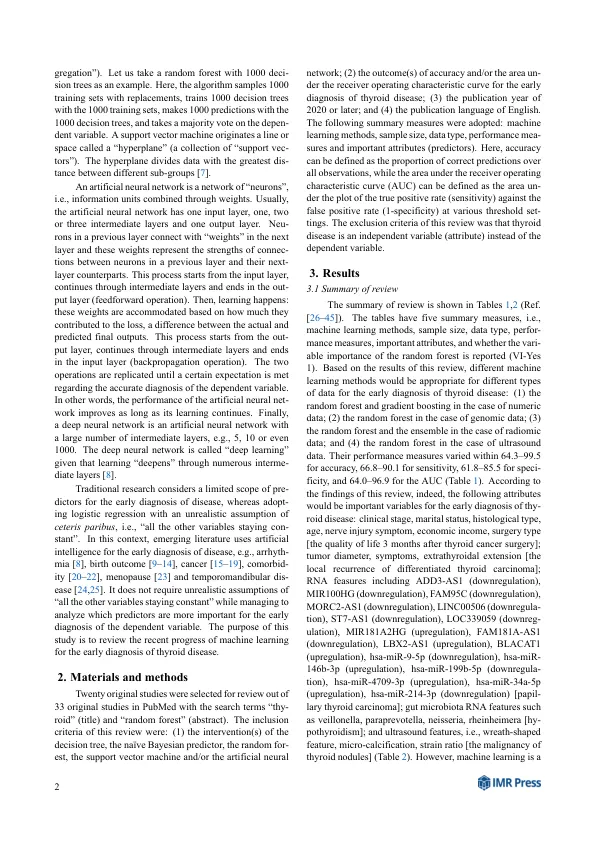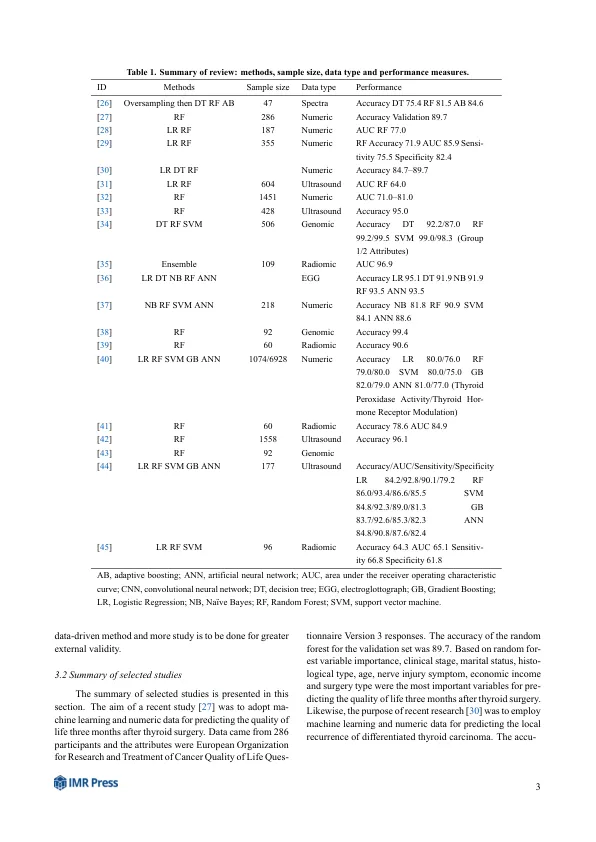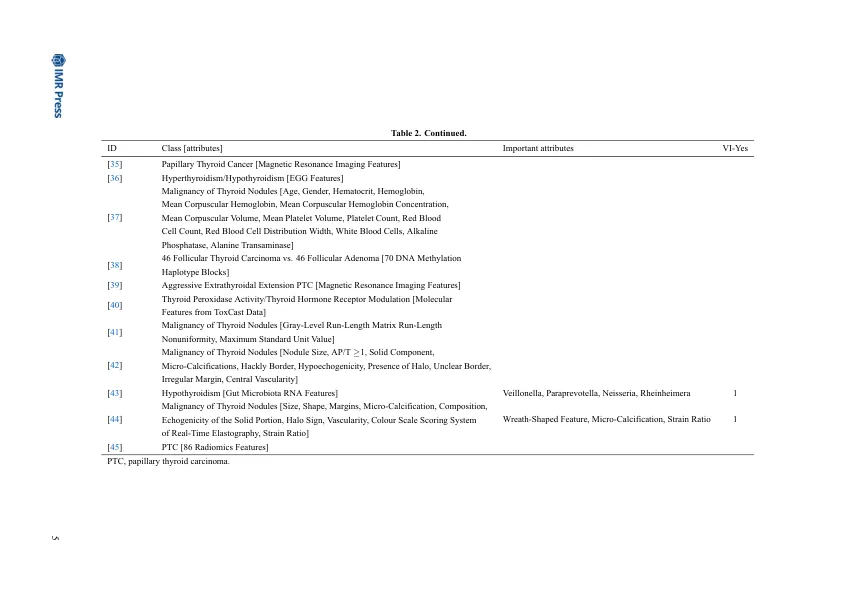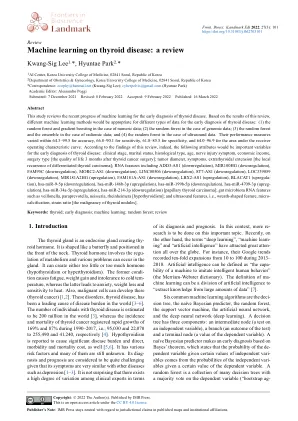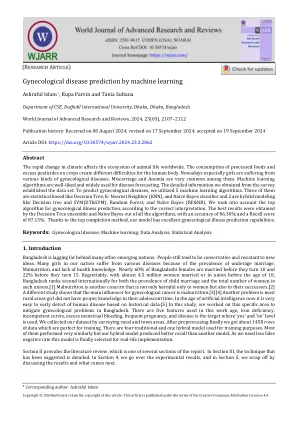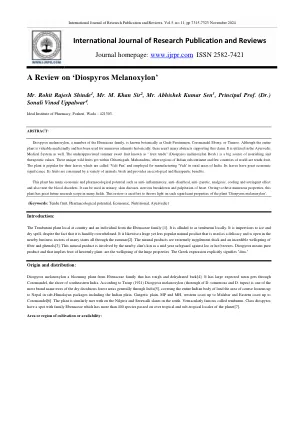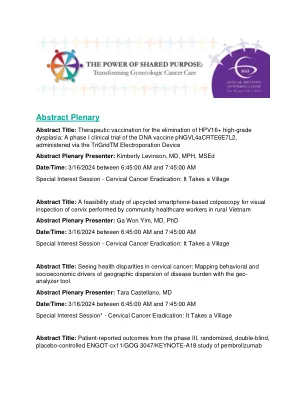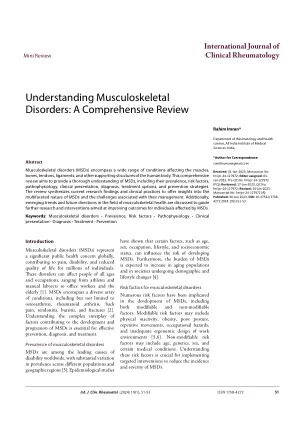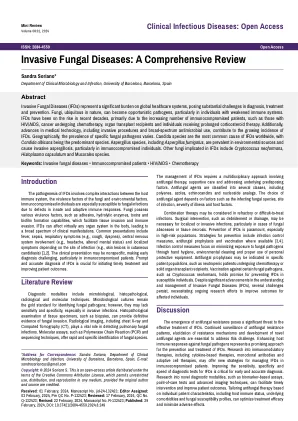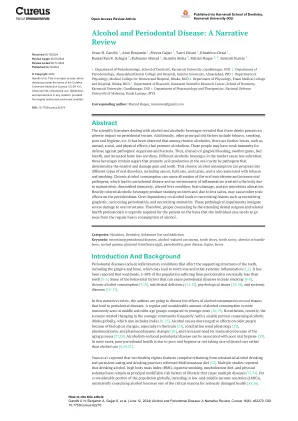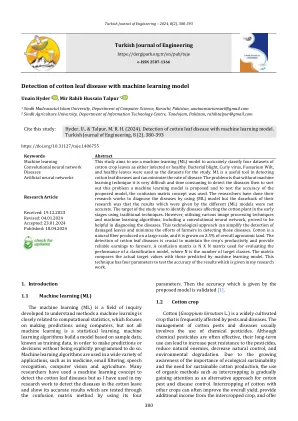本研究回顾了甲状腺疾病早期诊断的机器学习的最新进展。基于本综述的结果,不同类型的甲状腺疾病诊断的不同类型的数据将适合于甲状腺疾病的不同类型的数据:(1)在数字数据的情况下,随机森林和梯度提升;(2)基因组数据中的随机森林;(3)随机森林和Radiomic Data;(4)森林中的随机森林;其性能度量在64.3–99.5范围内有所不同,灵敏度为66.8–90.1,特异性为61.8-85.5,在接收器操作特征曲线下的区域为64.0–96.9。According to the findings of this review, indeed, the following attributes would be important variables for the early diagnosis of thyroid disease: clinical stage, marital status, histological type, age, nerve injury symptom, economic income, surgery type [the quality of life 3 months after thyroid cancer surgery]; tumor diameter, symptoms, extrathyroidal extension [the local recurrence of differentiated thyroid carcinoma]; RNA feasures including ADD3-AS1 (downregulation), MIR100HG (downregulation), FAM95C (downregulation), MORC2-AS1 (downregulation), LINC00506 (downregulation), ST7-AS1 (downregulation), LOC339059 (downregulation), MIR181A2HG (upregulation), FAM181A-AS1 (downregulation), LBX2-AS1 (upregulation), BLACAT1 (upregula- tion), hsa-miR-9-5p (downregulation), hsa-miR-146b-3p (upregulation), hsa-miR-199b-5p (downregulation), hsa-miR-4709-3p (upreg- ulation), hsa-miR-34a-5p (upregulation), hsa-miR-214-3p (downregulation) [papillary thyroid carcinoma]; gut microbiota RNA features such as veillonella, paraprevotella, neisseria, rheinheimera [hypothyroidism]; and ultrasound features, i.e., wreath-shaped feature, micro- calcification, strain ratio [the malignancy of thyroid nodules].
甲状腺疾病的机器学习:评论
主要关键词

